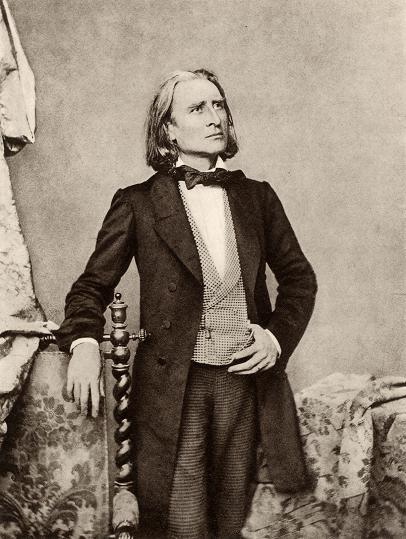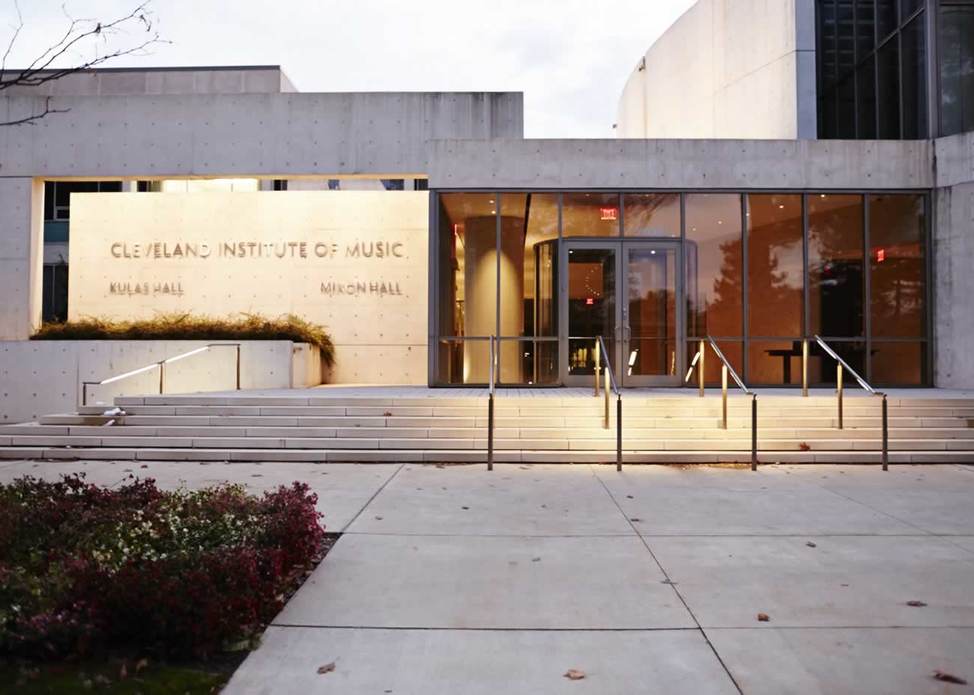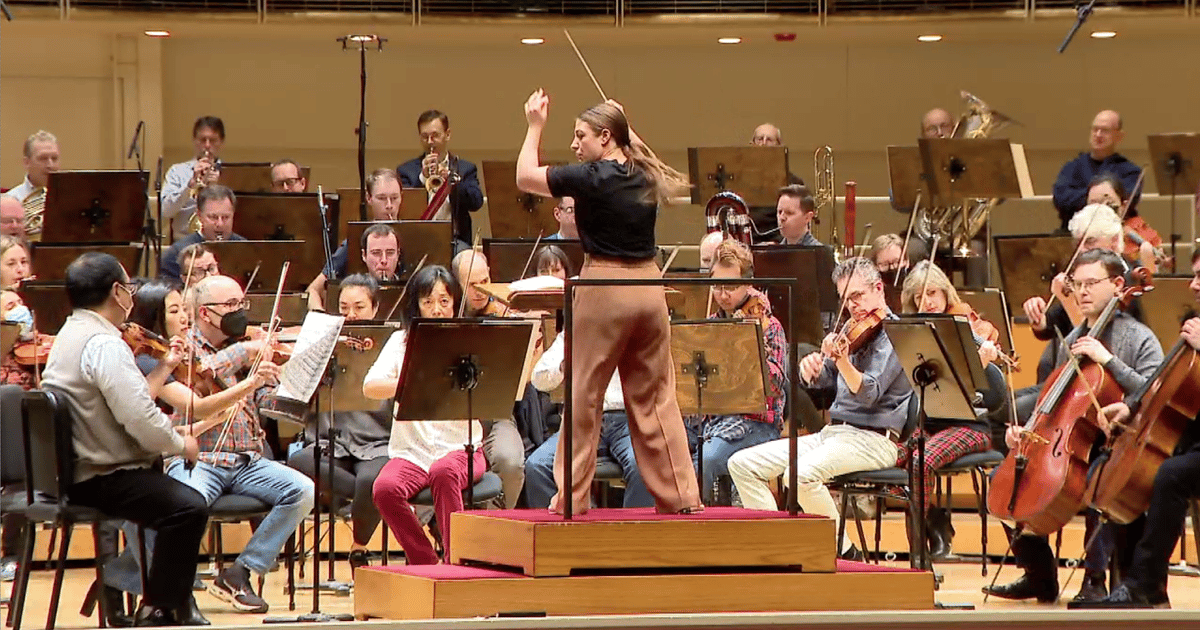Millions to be lavished on Liszt research
NewsThe German Research Foundation has authorised a budget of millions of Euros to digitise the complete works of Franz Liszt, few of which are much performed nowadays.
‘Franz Liszt is the only prominent composer of the 19th century for whom there is still no complete list of sources and works,’ says musicologist Christiane Wiesenfeldt who is in charge of the project.
So far, 1.2 million Euros have been allocated for the first three years of a 12-year collaborative venture between Heidelberg University, the Saxon State Library in Dresden and the Goethe and Schiller Archive in Weimar.
What about the Hungarian sources? I wonder.
And the Vatican?
Seems a bit undercooked, like so much of Liszt’s orchestral music.






Money well spent.
That’s a snide remark about Liszt’s music. An unworthy, off the cuff statement. Seems insulting to some of your readers who may admire much of Liszt’s music.
Agreed. His late music is unknown to many and criminally underappreciated and neglected. As I’ve written on here before–they are some of the most visionary works ever composed. I find them far more interesting than for example the music of the 2nd Viennese.
Liszt was a very uneven composer. Much of his piano music however belongs to the top, in spite of its flashy and often superficial nature, which is made-up for by bravoure and ingenious textures and effects. His symphonic poem Orpheus is a masterpiece; the other symphonic poems have beautiful passages (like the beginning of Les Préludes) but also much empty pomposity. But the compositional technique of the symphonic poems is very ingenious and shows a thoroughly differentiating intellect: transformation of motives and themes in subtle ways so that they appear again in a different way. Wagner carefully studied all of them and learned from the music how to transform motives in infinite and malleable varieties – hence the continuous invention of the music of his operas.
Often Wagner’s motives and themes are ‘borrowed’ from Liszt, or entire compositional ideas, like the choral parts and Verwandlungsmusiken of Parsifal which stem from Liszt’s ‘Die glocken von Strassbourg’ and his Elisabeth cantata. (The 1st half of the famous opening theme of Parsifal is from Liszt’s short orchestral piece ‘Excelsior!’.)
And of course, Liszt’s greatest and most visionary work is the famous Sonata in B minor, which creates an entirely new version of sonata form, synthesizing the traditional four movement types into one organic whole. This work formed the example for Schoenberg’s First Chamber Symphony, an equally spectacular masterpiece. In this way, Liszt showed to fellow composers how tradition could be renewed and find new forms and expressions.
Liszt’s late piano works are fascinating experiments in widened, floating tonality, he even forsaw atonal modernism (and feared the consequences). His handling of dissonance (like at the beginning of Via Crucis, one of the most painful ones in music history) is exemplary.
So, indeed lots of works are undercooked, but the number of well-done pieces generously compensate for this.
John,
Agreed. There is much I don’t like about Liszt like most composers. However, the Liszt I do like to me are very special. His B minor Sonata is one. His Via Crucis is extraordinary! I feel like I will need the rest of my life to fully appreciate this incredibly original and monumental work. It fits nicely with his late experimental works. He first composed it for the organ accompaniment but thank God he composed a later version for the piano. The keyboard music portion alone is as they say worth the price of admission.
Agreed.
Some of the passages of “empty pomposity” in his orchestral works sound much less so in the period-instrument performances led by Martin Haselböck; using the narrow-bore brass of his time helps a great deal in this respect.
Of his symphonic poems, I agree that Orpheus is top of the class; for my taste, it makes a fine diptych paired with Prometheus. His last, Von der Wiege bis zum Grabe, is hors concours as another brilliant late work; among the earlier 12, I’d also single out Hamlet: a probing psychological portrait devoid of pomposity. (Among the poems I could do without: Hunnenschlacht and Festklänge…)
Others of his orchestral works are also superb: the two symphonies, the Episodes from Lenau’s Faust, his second Funeral Ode (La notte), Evocation a la Chapelle Sixtine…
Among the symphonic poems, “Mazeppa” has never appealed to me, and “Heroide funebre” just sort of plods along. But “Hunnenschlacht” can be really thrilling if there’s a big pipe organ involved — Bernard Haitink’s LPO performance is perhaps the benchmark recording for that. “Orpheus” is an absolute gem of a piece, and “Prometheus” and “Hungaria” are also very effective programmatic works. All of these deserve to be programmed at least as often as “Les Preludes” …
I find having a hole drilled in my head and filled with concrete ‘far more interesting’ than much from the 2nd Viennese school.
A very accurate statement. Liszt was the most vapid of all major composers.
Obviously a comment from someone who does not know the music.
I know it well, and while my post may be hyperbole, despite trying off and on for 45 years I can’t stand 90% of Liszt.
…which is your constitutional right.
you haven’t heard 90% of LIszt’s music – NOBODY has!
SOME of us have. 🙂
It’s your vapid mind that is your problem, not Liszt’s music.
Do you have a really good piano technique? Asking for a friend.
Exactly Stephen, Liszt’s early versions of pieces which he later simplified are as much interest to me as the latest things he wrote down. And Liszt’s work and benevolence towards his pupils are worthy of a Doctoral Study of their own. I agree with you on this matter.
They all of ‘em by Liszt, there all of ‘em by Liszt,
And they’ll none of them be missed, they’ll none of them be missed.
With apologies to WSG
I like Liszt but that is adorable.
Although “only” three German libraries/archives are mentioned as cooperation partners, I cannot understand your point. At least according to the press release, there is no limitation to German sources (https://www.slub-dresden.de/ueber-uns/presse/pressemitteilung/2022/1/17/digitales-quellen-und-werkverzeichnis-fuer-franz-liszt-slub-dresden-erfolgreich-mit-kooperativem-forschungsantrag). Moreover, the goal of the project is to provide a _complete_ digital archive. I assume that your comment about sources from Hungary or the Vatican has no actual background. Please correct me if I am wrong.
Maybe the connection with the Vatican is a bit burdened by history. Liszt tried to get it interested in a reform of church music, without much effect, and to get the marriage of his girlfriend – the Princess Von Sayn-Wittgenstein – anulled so that he could marry her instead of living with her ‘in sin’ – which did not work either. Then what happened? When the princess heard that the Vatican did not help her to religiously legalize the relationship with Liszt, she furiously wrote a many-tome book called ‘The Deficiencies of the Catholic Church’ which did not endear the prelates either, although there is no evidence that anybody actually READ the book.
I always enjoy your wonderful, thoughtful comments!! The (non-musical) spouse read Walker’s 3 tomes on Liszt while we were living in Vienna (as he didn’t have German). I’ve just shown him your comments and he was impressed, as he grew to really like and appreciate Liszt the man.
And his philanthropy – especially with the Beethoven statue in Bonn.
On the other hand, Liszt enjoyed the patronage and friendship of Pope Leo IX, as well as of several cardinals, and it is entirely possible that the Vatican may house the manuscripts of some of his religious music.
I believe that Liszt took the minor orders of the Church after the attempt to annul Sayn-W’s marriage failed, so that his relations with the Church were not ruptured by the matter.
Indeed.
Concerning L’s late religious music: there are manuscripts in the Weimar library, photocopies of which I saw at Cambridge, and they are very strange: sweet choral pieces with the accompaniment of celesta, harmonium and harp, in traditional tonality but dressed-up with sacharine tinkling and humming, obviously meant as new versions of church music for the congregations.
“Seems a bit undercooked, like so much of Liszt’s orchestral music.”
Oh my. A second listen to much of his orchestral music might be in order. I find the symphonic poems, concertos, Faust symphony, oratorios, etc., beautiful from a musical perspective, and from a structural and orchestration perspective. The place of those works, and their influence, is set – imho.
“Franz Liszt is the only prominent composer of the 19th century for whom there is still no complete list of sources and works.”
Now we know, why there is still some empty space (currently filled with foam) in the complete piano works CD box set.
I hope that Leslie Howard is part of the research team so we get even more “new discoveries” published!
https://www.lesliehowardpianist.co.uk/music
A Liszt research project that doesn’t include Leslie Howard is simply not a Liszt research project. Nobody in this entire universe knows more about Liszt and his music than Dr. Howard – PERIOD.
Let’s place Professor Walker in the same universe with Dr. Howard.
Of course the most vapid piece of music by Liszt is ‘Nuages gris’ – long live vapidity!
Exactly. Nuages Gris (admired by later composers like Debussy and Stravinsky), Bagatelle without Tonality, Funeral Prelude and March, La Lugubre Gondola I and II, Unstern Sinistre, etc just from the late period, and then you have his earlier B minor Sonata (on the active repertoire of every respectable pianist), Funerailles, Ballade No 2 and the wonderful Annees de Pelerinage 1-3. And these are just his piano works.
Long live vapidity!
Liszt was working on his late, ‘atonal’ pieces like Nuages Gris, which seems to hang in the air entirely undecisively, while being Wagner’s guest in Venice in 1883 where the Wagners had moved to after the Parsifal premieres. He composed them at a piano on the upper floor, and some waves of sound reached the ground floor where Wagner got much irritated by it. He said to his wife: ‘Your father is going senile! Listen to THAT!’
Ironically, ‘La lugubre gondola’ was one of those pieces, and shortly after that, Wagner himself was transported in a lugubre gondola to the railway station on his way to be buried at Wahnfried.
The scene of Liszt composing his late piano pieces a floor above Wagner’s, including his musical premonition, is unforgettable.
The old he got, the “better” he got as a composer. Love the late piano works!
Which isn’t exactly what one could say about a bunch of other composers (Stravinsky, Gliere, Bernstein, Copland …)
Recent musicology has significantly helped to increase Liszt’s stature as composer and to deepen the appreciation of much of his music. The announcement of this project is wonderful news.
This is nonesense. Many works by liszt are regularly performed and recorded. There are huge catalogues of his works. The so called ‘clacissists’ have suppressed a lot because they dislike innovation an departures from their narrow algorithms. Liszt study both as musician and a historical figure who tried to democratise music, taking it out of the Palace and placing it before public audiences without the usual attempts to create negative comparisons with so called classical composed, is much needed. He was also in the intellectual ferment of 19th century Europe. His father couldn’t make a living out of his virtuoso cello playing because of the system of patronage. Liszt broke through and became the pop star of his age, made millions and then gave them to charitable causes. Needs reappraisal.
Most people can’t play Mary Had A Little Lamb properly….please dont criticize Liszt’s music
I tried it as a kid, when I had to take piano lessons, my mother thought it were becoming for a blond girl. But the Little Lamb is really hard, also if you’re blond. Obviously, this List guy never had to do the Lamb piece, good for him!
Sally
Some commenters here assume they know Liszt because they know music. Others assume they know history because they have absorbed ancient gossip. Still others know of some of his relationships, but mistake their significance. To all who haven’t, I recommend Alan Walker’s 3 volumes, Franz Liszt.
Liszt was more a keyboard man, obviously, and composed fairly good choral works and Oratorios. Orchestral works were not really his forte, so to speak. That said, I do enjoy “Les Preludes” and the “Dante” Symphony (less so the “Faust” Symphony).
Liszt’s symphonic works are often extraordinary. If you have not heard his mass “Christus,” then you are missing a groundbreaking epic piece that was ahead of its time. Of course some of his pieces were less interesting or uneven. The same could be said for Beethoven and Mozart and Schubert and every composer. But Liszt was willing to experiment and explore. He ushered in the 20th century with works that bordered on being atonal. He explored unusual scales and modes before Debussy. He lived longer than most composers, so you truly get to hear his music evolve over many years. And yes, the famous opening chords of Tristan und Isolde were “borrowed” directly from a piece by Liszt, presumably with his blessings.
There was a conversation between Wagner and Liszt about an article that had appeared in a musical journal about the ancestry of the Tristan phrase (as related by Cosima). Wagner had expressed irritation about the revelation and said to Liszt: ‘How we get our material should remain among us, not for the public to know.’ Of course Wagner had used, borrowed, varied, stolen, exploited almost all of his material from Liszt, who knew this very well but never protested. Liszt was the explorer, but not always finding the best solution for his material; Wagner fulfilled most of the potential in a brilliant way. Liszt was like a gambler and Wagner like a financier of genius.
One listen to his piano transcription of Camille Saint-Saëns’ ‘Danse Macabre’ and you’ll understand.
Yes, especially the untouched Liszt version with all the expansions, not the frequently played 1942 Horowitz reworking
https://youtu.be/kcwQdVxnBHU
You article is heavily undercooked, not Liszt’s outstanding innovative orchestral works. Wouldn’t hurt to do some research before posting. Or just don’t write, period, if the only thing you can offer is a display of ignorance.
As usual you manage not to let the facts get in the way of a good story Norman. Yo
So I learn here that hating Liszt is a thing, all the while sitting there at the piano he in great measure invented or inspired. And I think, “Come back when you can even whistle me a few bars from Der Erlkönig.”
Don’t mix Liszt’s personal life with his gifts as a composer. Obviously you have not studied the music very deeply. When it is performed well, which is not always, its profound qualities are evident. He was an original, but he also helped more musicians than any composer in history.
So is this all ‘news’ articles are now? Like just a couple of sentences and then a snarky remark about Liszt’s music and the thoroughness of the research efforts?
What discussion is being invited?
Apart from his Piano concertos-Liszt’s orchestral works are not worth worth spending a penney.
This is EXCELLENT news. Liszt’s music is so forward-looking that it’s misunderstood even to this day.